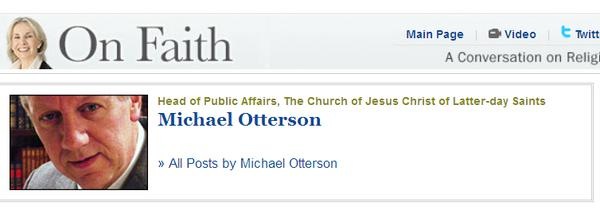
In his Washington Post “On Faith” forum post this week, Michael R. Otterson, managing director of The Church of Jesus Christ of Latter-day Saints Public Affairs Department, suggests that the journalist-produced term “Mormon Moment” is a cliché in need of revision.
Several events during the past decade (for example, the 2002 Winter Olympics and the 2007-08 presidential primaries) have been dubbed a “Mormon Moment.” The literal meaning of “moment,” however, is an indefinite but very short period. This is a problem, Otterson says, because the Church has a long and poignant history in the United States. Such a superficial appellation misses the breadth and depth of Mormon life for everyday Latter-day Saints across the globe.
Treating this rising interest in the Mormon faith as a fleeting fad tends to shoehorn the subject into a confined timeframe and invite simplistic definitions and questionable conclusions. In their rush to render judgment in such a context, political journalists on TV talk shows generate shallow discussions about what is and what isn’t relevant about a candidate’s Mormon faith.
Otterson then tells journalists what they can do now to more effectively get at the heart of Mormonism.
Get to know us — properly. Drop into our services, talk to our people, have dinner with a local leader, spend a family home evening with a family, be present when a young soon-to-be missionary opens his or her “call letter” and learns where they will be spending the next couple of years. Join with us on a service project. And then, when you have scratched the surface in this way, closely observe the transformation of people’s lives outside the Church as missionaries teach them and they go through the conversion process. Watch those who transition from attitudes of hopelessness to lives of purpose and meaning and learn new ways to follow Jesus Christ. Talk to a Mormon bishop — our version of the local pastor, but who is unpaid for their volunteer work — as he helps people grapple with problems of addiction or shaky marriages or unemployment. Examine the doctrine — not through the simplistic “us and them” comparisons that we see so often, but in ways that explain how the doctrine of the Church influences behavior.
Otterson also mentions a study from sociologists at the University of Pennsylvania and Indiana University-Purdue that captures the deep religious commitment of Latter-day Saints.